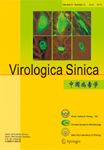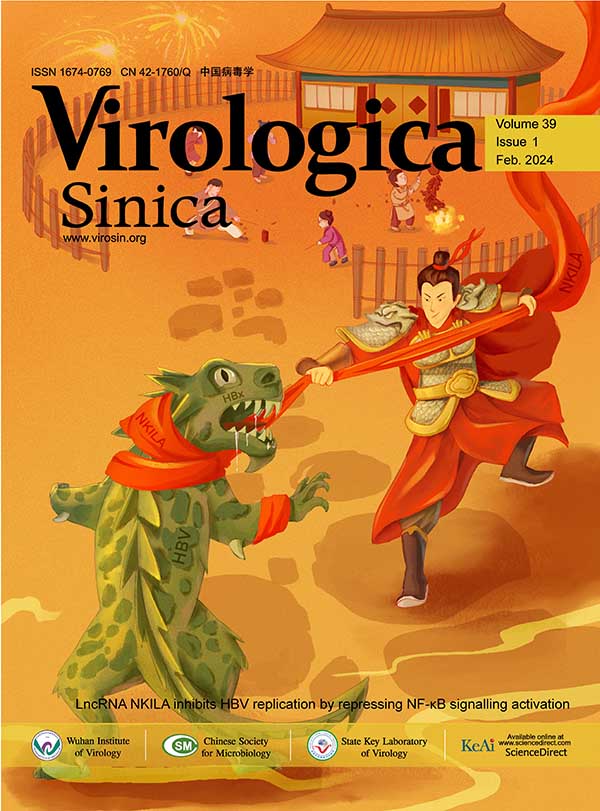Column
|
The Nucleolus and Viral Infection
2010, 25(3): 151 doi: 10.1007/s12250-010-3093-5
Received: 21 September 2009
Accepted: 31 March 2010
The nucleolus is a subnuclear structure of eukaryocytes. It was thought that nucleolus only participates in the biogenesis and processing of rRNA. However, more and more evidence shows that it has many other functions, such as tRNA precursor processing, stress sensing and it is also involved in gene silencing, senescence and cell cycle regulation. Here, we summarize the recent understandings about the nucleolar functions, the regulation of nucleolar localization of proteins and the role that the nucleolus plays in virus infection, in which some related studies of Herpes simplex virus type 1 (HSV-1) US11, UL24 and bovine herpesvirus-1 infected cell protein 27 (BICP27) carried out in our lab will also be included.
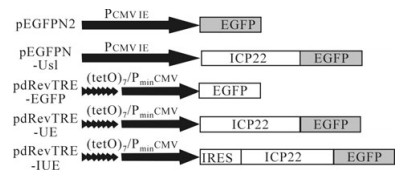
Analysis of the Cellular Localization of Herpes Simplex Virus 1 Immediate-early Protein ICP22
2010, 25(3): 158 doi: 10.1007/s12250-010-3118-0
Received: 11 November 2009
Accepted: 08 March 2010
Nuclear proteins often form punctiform structures, but the precise mechanism for this process is unknown. As a preliminary study, we investigated the aggregation of an HSV-1 immediate-early protein, infected-cell protein 22 (ICP22), in the nucleus by observing the localization of ICP22-EGFP fusion protein. Results showed that, in high-level expression conditions, ICP22-EGFP gradually concentrates in the nucleus, persists throughout the cell cycle without disaggregation even in the cell division phase, and is finally distributed to daughter cells. We subsequently constructed a mammalian cell expression system, which had tetracycline- dependent transcriptional regulators. Consequently, the location of ICP22-EGFP in the nucleus changed with distinct induction conditions. This suggests that the cellular location of ICP22 is also influenced by promoter regulation, in addition to its own structure. Our findings provide new clues for the investigation of transcriptional regulation of viral genes. In addition, the non-protease reporter system we constructed could be utilized to evaluate the role of internal ribosome entry sites (IRES) on transcriptional regulation.
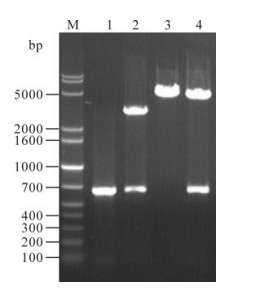
Establishment of an ELISA to Detect Kaposios Sarcoma-associated Herpesvirus Using Recombinant ORF73
2010, 25(3): 168 doi: 10.1007/s12250-010-3106-4
Received: 23 October 2009
Accepted: 31 March 2010
Kaposi’s sarcoma-associated herpesvirus (KSHV) is causally related to Kaposi’s sarcoma (KS), primary effusion lymphoma (PEL) and a proportion of cases of multicentric Castleman’s disease (MCD). The ORF73 protein was cloned into pQE80L-orf73 and expressed in E.coli and purified. The expressed recombinant ORF73 was identified by sodium dodecyl sulfatepolyacrylamide gel electrophoresis (SDS-PAGE). A protein of about 27 kDa was expressed as expected. Western Blotting showed that the purified recombinant ORF73 reacted with KSHV positive serum. The immunogenicity of the recombinant ORF73 was further analysed by ELISA and the optimal conditions were determined. The ORF73 ELISA was used to compare the KSHV seroprevalence between Hubei and Xinjiang Han people. The Han people in Xinjiang have significantly higher KSHV seroprevalence than their counterparts in Hubei (6.7% vs 2.9%, P = 0.005).
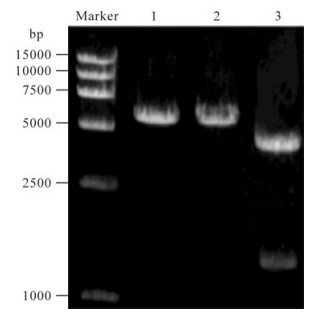
In Vivo Kinetics and Biodistribution of a Hantaan Virus DNA Vaccine after Intramuscular Injection in Mice
2010, 25(3): 177 doi: 10.1007/s12250-010-3103-7
Received: 30 September 2009
Accepted: 08 March 2010
To study the kinetics in vivo of a Hantaan virus DNA vaccine, we constructed a fusion DNA vaccine, pEGFP/S, by cloning the S segment of Hantavirus into the vector, pEGFP-C1, which encodes Green fluorescent protein EGFP. In this report, we provide evidence that pEGFP/S was distributed and persistently expressed for more than 60 days in several organs after inoculation. Our findings suggest that the persistent immune responses induced by a Hantaan virus DNA vaccine are likely due to the plasmid pEGFP/S deposited in vivo, which acts as a booster immunization.
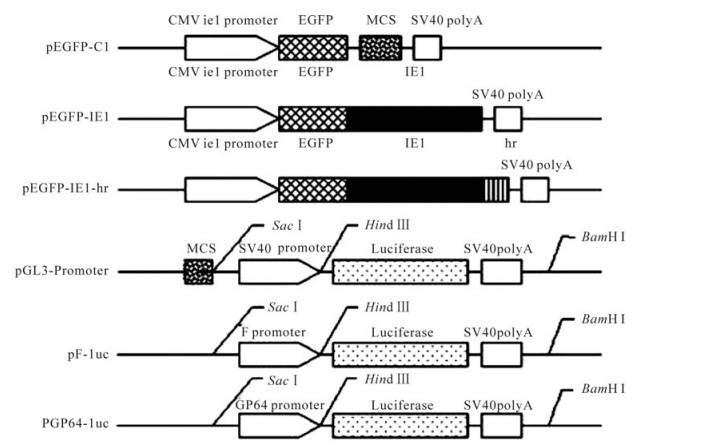
Localization and Functional Analysis of SeMNPV IE1 in Mammalian Cells
2010, 25(3): 183 doi: 10.1007/s12250-010-3113-5
Received: 19 November 2009
Accepted: 02 March 2010
In this paper, the function of the ie1 gene from baculovirus Spodoptera exigua multiple nucleopolyhedrovirus (SeMNPV), belonging to group II nucleopolyhedrovirus, was studied in mammalian cells. We amplified the SeMNPV ie1 gene and expressed it by fusing to the C terminal of enhanced GFP protein in HEK 293 cells. Confocal microscopy revealed that the IE1-GFP fusion protein was localized in the nucleus of the mammalian cells. The promoter sequences of AcMNPV gp64, SeMNPV F protein and Drosophila hsp70 were also analyzed, to further study the function of SeMNPV IE1. The results showed that, in the absence of the hr sequence, IE1 improved the expression of the F promoter but didn’t influence the gp64 promoter significantly, but IE1 moderately stimulated the hsp70 promoter.
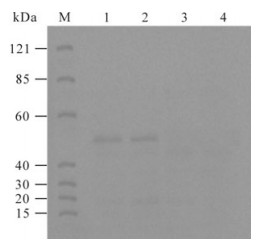
An ELISA Based on a Truncated Soluble ORF2 Protein for the Detection of PCV2 Antibodies in Domestic Pigs
2010, 25(3): 191 doi: 10.1007/s12250-010-3085-5
Received: 02 July 2009
Accepted: 06 April 2010
Postweaning multisystemic wasting syndrome (PMWS) is an important swine disease that is closely associated with porcine circovirus type 2 (PCV2). The capsid protein (Cap protein) is a major structural protein that has at least three immunoreactive regions, and it can be a suitable candidate antigen for detecting the specific antibodies of a PCV2 infection. In the present study, an indirect enzyme-linked immunosorbent assay (TcELISA) based on a truncated soluble Cap protein produced in Escherichia coli (E.coli) was established and validated for the diagnostic PCV2 antibodies in swine. The TcELISA was validated by comparison with an indirect immunofluorescence assay (IIFA). The diagnostic sensitivity (DSN), specificity (DSP), and accuracy of the TcELISA were 88.6%, 90.7% and 89.4%, respectively. The agreement rate was 89.38% between results obtained with TcELISA and IIFA on 113 field sera. A cross-reactivity assay showed that the method was PCV2-specific by comparison with other sera of viral disease. Therefore ,the TcELISA will be helpful for the development of a reliable serology diagnostic test for large scale detection of PCV2 antibodies and for the evaluation of vaccine against PCV2 in swine.
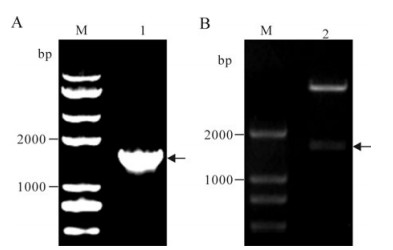
Herpes Simplex Virus Type 1 ICP27 Protein: Its Expression, Purification and Specific Antiserum Production
2010, 25(3): 199 doi: 10.1007/s12250-010-3116-2
Received: 11 December 2009
Accepted: 01 February 2010
Herpes simplex virus type 1 (HSV-1) is the causative agent of cold sores and other more serious diseases. HSV-1 infected-cell protein 27 (ICP27) is an immediate-early regulatory phosphoprotein homologous to gene products identified in all classes of herpesviruses so far. To raise the antiserum to ICP27 for further characterization of its biological function, the ICP27 gene was cloned into the pET-28a (+) vector, then ICP27 protein was expressed in E. coli and purified by nickel-nitrilotriacetic acid (Ni2+-NTA) affinity resin column, finally the purified protein was used to raise antiserum. Western blot analysis demonstrated that the antiserum recognized the recombinant protein, and the antiserum was able to probe the ICP27 in HSV-1 infected cells with high specificity by immunofluorescence assay (IFA). Therefore, the specific antiserum will provide a valuable tool for further studies investigating ICP27’s biological function during HSV-1 infection.
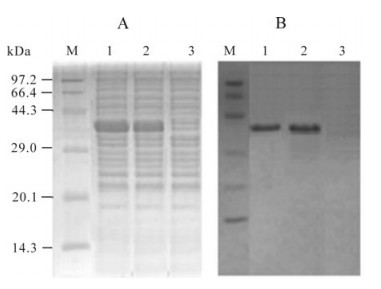
Expression and Immunological Analysis of Capsid Protein Precursor of Swine Vesicular Disease Virus HK/70
2010, 25(3): 206 doi: 10.1007/s12250-010-3100-x
Received: 08 September 2009
Accepted: 04 March 2010
VP1, a capsid protein of swine vesicular disease virus, was cloned from the SVDV HK/70 strain and inserted into retroviral vector pBABE puro, and expressed in PK15 cells by an retroviral expression system. The ability of the VP1 protein to induce an immune response was then evaluated in guinea pigs. Western blot and ELISA results indicated that the VP1 protein can be recognized by SVDV positive serum, Furthermore, anti-SVDV specific antibodies and lymphocyte proliferation were elicited and increased by VP1 protein after vaccination. These results encourage further work towards the development of a vaccine against SVDV infection.

Complete Genomic Sequence of Transmissible Gastroenteritis Virus TS and 3o End Sequence Characterization Following Cell Culture
2010, 25(3): 213 doi: 10.1007/s12250-010-3108-2
Received: 29 October 2009
Accepted: 14 April 2010
The complete genome sequence of transmissible Gastroenteritis virus (TGEV) strain TS, previously isolated from Gansu province, was cloned and compared with published sequence data from other TGEV strains. Phylogenetic tree analysis based on the amino acid and nucleotide sequences of the S gene showed that the TGEV strains were divided into 3 clusters. TGEV TS showed a close evolutionary relationship to the American Miller cluster but had a 5’ non-translated region (NTR) sequence closely related to the American Purdue cluster. Continued culture in different cell types indicated that TGEV TS virulence could be attenuated after fifty passages in Porcine kidney (PK-15) cells, and that the Porcine kidney cell line IB-RS-2 (IBRS) was not suitable for culture of the TGEV strain TS.







